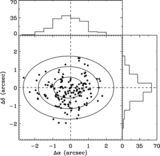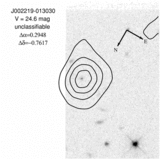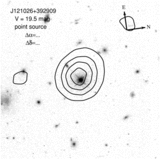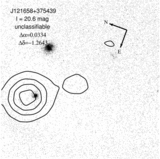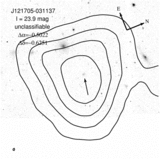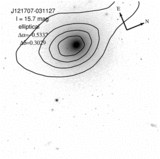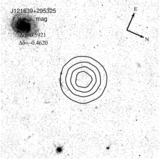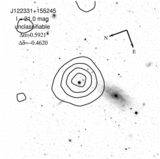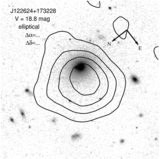Image Details
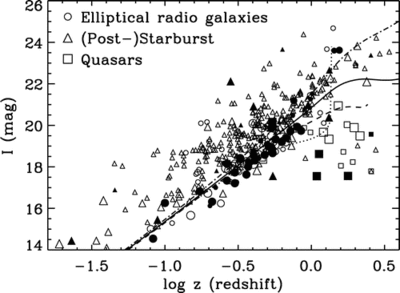
Caption: Fig. 9.
Hubble diagram for faint radio galaxies. Data is compiled from numerous sources (Windhorst et al. 1984, 1985; Kron et al. 1985; Fomalont et al. 1997; Richards et al. 1998; Waddington et al. 2001; Roche et al. 2002; Chapman et al. 2003). The circles, triangles, and squares represent ellipticals, starbursts, and quasars, respectively. The open symbols represent pointlike or small radio sources, while filled symbols show (classical) double or extended radio sources; the size of the plotted point is logarithmically proportional to the radio flux from 10–105 μJy (Windhorst 2003). The lines are from stellar population synthesis models of (Bruzual & Charlot 2003). The dot‐dashed line is a constant star‐formation model and solid, dashed, and dotted lines are an exponential star‐forming history with ages of 13, 11, and 9 Gyr, respectively. The e‐folding timescale in the exponential models is 1.3 Gyr. All models assume a stellar mass of 1011 M⊙, a Salpeter IMF (Salpeter 1955), and solar metallicity. The obvious trend in this diagram suggests that early‐type radio galaxies are roughly standard candles and that the unidentified millijansky objects with ﹩I\gtrsim 22﹩ mag are likely at ﹩z\gtrsim 1﹩. Note that the I‐band magnitudes in this figure are in the Vega system; when necessary we assume ﹩( I_{\mathrm{AB}\,}-I_{\mathrm{Vega}\,}) \simeq 0.48﹩ mag.
Copyright and Terms & Conditions
© 2008. The American Astronomical Society. All rights reserved. Printed in U.S.A.


